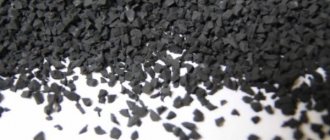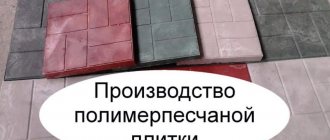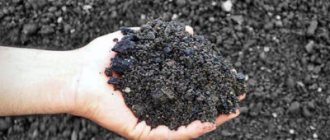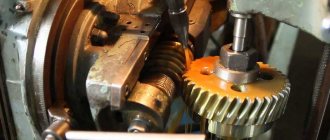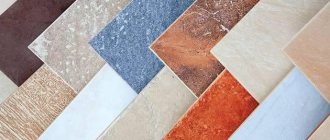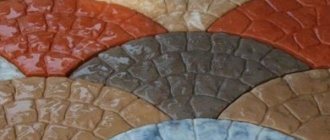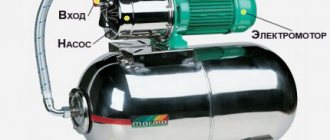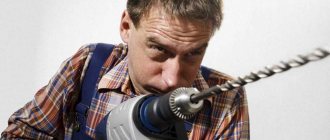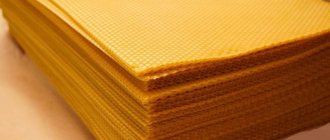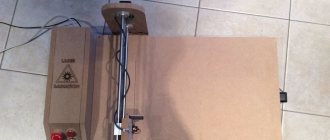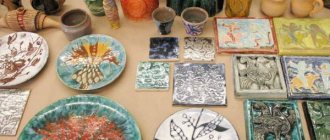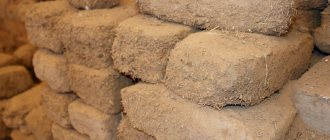The production of building materials has always been one of the most successful areas of business, especially when it comes to popular and quickly consumed products. In our case, the object of interest was rubber tiles, the production of which for sale is quite a profitable business. It has been in great demand lately, and is bought by both individuals and large construction organizations, which allows even a beginner not to worry about the difficulty of finding distribution channels for the finished product.
Business registration
Choice of legal form
To choose the right form of doing business, it is worth considering how large-scale it will be at the start of your work, and what goals you are pursuing in the future. For a beginner planning to open a mini-workshop, an individual entrepreneur is suitable, which can be quickly registered and does not require large investments. In the future, to expand your business and work with other organizations directly, you will need to register an LLC.
OKVED codes
When registering a business, the owner usually indicates the OKVED code corresponding to the project’s specialization. In this case, the following are suitable:
- 1 – “Manufacture of rubber products”;
- 19 – “Production of other rubber products”;
- 43 – “Installation of floor coverings and wall cladding: laying carpets, linoleum, rubber and plastic coverings.”
Legal side of the issue
A manufacturing business should be registered as an LLC under simplified taxation (USN or UTII) with OKVED code 22.1 - production of rubber products. To work you need:
- Documents for the company - registration certificate, charter/memorandum of association, extract from the Unified State Register of Legal Entities, protocol and order for the appointment of a director
- Permits - from the district administration, Rospozharnadzor, SES
- Certificate from a specialized issuing center - about the quality of the product and its compliance with GOST
- Agreements - with staff, lessor, suppliers of raw materials, bank servicing the account
What are rubber tiles made of?
The main raw material for the production of tiles is crumb rubber from car tires or simply crushed rubber. As a standard, it is divided according to quality, size and production method, and this is what determines its price. Crumbs can be purchased at wholesale prices from organizations specializing in rubber processing, which have also recently begun to develop. The approximate price of a ton of crumbs is 15 thousand rubles.
Many enterprises today still purchase not ready-made crumbs, but the tires themselves, so that they can be processed later on themselves. Cooperation takes place with recycling stations or landfills, where you can purchase old tires.
In addition to regular rubber, you need to purchase polyurethane glue and dyes.
Raw materials for the production of rubber coating
To set up the production process, you will need to purchase the following materials:
- crumb rubber (colored and black);
- dyes;
- polyurethane glue.
The main raw material is crumb rubber. Mainly, it consists of used tires. The key to the strength and durability of crumb rubber is the high quality of both natural and artificial rubber, as well as softening oils and fillers that are used in the manufacture of tires.
Crumb rubber is produced as follows. First, waste rubber products are collected at a specially designated site. Then, from the place where the crumb rubber is stored, it is delivered by forklift to the workshop.
There it is loaded into a special installation that processes rubber products. The process of producing crumb rubber of a certain fraction starts. Finished products are packed into bags and a forklift transports them to warehouses.
Equipment for the production of
In the production of rubber tiles, enterprises use different types of pressing: hot and cold. We will not discuss hot pressing due to the fact that this method is performed using more expensive equipment and leaves a less durable result in the end. If you buy ready-made crumb rubber, then for cold pressing you will need the following equipment.
| Photo | Device name | Main characteristics | average price |
| Industrial mixer or mixing station | This equipment is needed to mix the base: crumbs and glue with dye. You need to buy at least two mixers or an entire station with a platform. | 150 thousand rub. per station | |
| Hydraulic Press | Productivity should be about 100 square meters per day. | 350 thousand rub. | |
| Press forms | Molds are needed to give the solution the desired shape at the stage of its hardening. They are usually made from lightweight but fairly durable materials such as low-density polyethylene. At least 10 forms of different formats are purchased. | 1 thousand rubles for 10 pieces. | |
| Fixing trolley stands | This equipment is needed to fix pallets with molds in the press machine. The design includes wheels. One trolley is purchased for 10 molds. | 35 thousand rub. for 1 piece | |
| Drying chamber | This equipment is needed to give the solution hardness and hold all the components together. Creates the desired temperature inside. | 150 thousand rubles. | |
| Total: | 830 | ||
List of additional equipment that will have to be purchased in addition to the main one:
- A platform table for molding, if you are not buying a station, and it does not come with mixers;
- Drill with attachments for mixing glue;
- Hydraulic trolley;
- Electronic industrial scales.
Among other things, you will have to purchase the necessary furniture and equipment for workers with tools such as trowels and measuring containers.
Tire recycling equipment
If you decide to purchase whole tires rather than crumbs, you will also need additional equipment. To crush standard tires, buy a line from:
- A device that cuts out the seat ring;
- Automatic machine for cutting tires into strips and blanks;
- Abrasion unit;
- Vibrating sieve for coarse and fine cleaning;
- Magnetic separator;
- Air separator;
- Three conveyor belts;
- Electrical panel.
The average productivity of such installations is 750 kg per hour, producing approximately 3600 kg of crumbs per shift. The approximate cost of the line on the market is 650 thousand rubles.
Important points in manufacturing
The process of making rubber tiles has some nuances associated with the choice of processing method. For the manufacture of rubber tiles, two main methods are used: cold and hot processing.
During cold processing, the tire processing temperature ranges from 70–80 degrees Celsius. Rubber crumbs are placed in a heating oven and sintered into one continuous mass. This method has two significant disadvantages and one advantage:
- processing the material takes significant time;
- the cost of such a procedure is quite high due to the high energy consumption of heating cabinets;
- slabs obtained by cold processing are of excellent quality.
During hot processing, the temperature can reach 140 degrees. This technology for making rubber tiles is used much more often. Has the following advantages:
- very little time is spent processing one tile;
- recycled materials that have been processed have a low cost, and accordingly, the final product becomes more accessible to the consumer;
- You can easily increase production volumes by purchasing several molds.
Molds for the production of rubber tiles
Production technology
To produce a quality product, you need to understand exactly how it is created, even if automation does most of the work. It is important to understand how production technology can be improved and where errors can occur. We will consider the full production cycle, when the crumbs are made independently and not purchased.
Preparation of crumb rubber
Before starting the actual production of tiles, purchased tires must be crushed on a crushing line. The tires are cut into small segments and passed through a shredder. After removing wire materials and other metals, the rubber is sent to the main crusher, where it is converted into crumbs needed for further production. It is passed through a vibrating sieve to sift out the necessary fractions. After grinding, it is packaged in bags. If the company does not purchase tires, but rather crumbs, this stage is skipped.
Creating a Mixture
At this stage, workers are preparing the mixture from purchased raw materials. To do this, rubber crumbs are mixed together with dye and glue in an industrial mixer, creating a uniform, homogeneous mass. By the way, glue is added after the crumbs are mixed with the dye.
Pouring the mixture into molds
This stage is necessary to create tiles of the density and thickness chosen by the customer. While the mixture is being prepared, workers clean and lubricate the molds with special solutions, after which the ready-made mixture is poured into them. First, it is necessary to lay the top layer, consisting of a fine fraction (most often this is a colored layer). All mixing of the mixture is done by hand.
Next, you need to lay the bottom layer of shock absorption from unpainted coarse crumbs. The molds with the compacted mixture are placed in a special cart of ten levels and sent to a hydraulic press.
Pressing
The trolley is placed in the press, and it compresses the molds (pressing). The approximate pressure it creates is 5 tons. Next, the cart is tightened with a clamp to maintain pressure. This will allow you to maintain the necessary pressure during drying, giving the tile the necessary density.
Drying tiles
Next, the forms are sent to the drying chamber, where they should remain for about 5 hours at a temperature of 60 degrees. In the chamber, the solidifying solution increases in volume, and the glue and dye are better absorbed into the enlarged pores of the rubber.
Packaging and storage
After pressing, the almost finished product is checked for quality and packaged manually or using a special machine. Packed lots are sent to a warehouse for further transportation.
Production Features
The production of multi-colored and black paving slabs from rubber crumbs has different costs. When dyes are added to the composition, the amount of adhesive solution increases significantly, so colored products are more expensive. The selling price of rubber paving slabs also depends on the cost of raw materials. Large chips, as a rule, cost less, but they are less easy to paint. In order to minimize costs, the production of rubber paving tiles was established using a two-layer technology. The lower part is a layer of a larger fraction of raw materials, and the upper part is made of fine crumbs, which are easier to paint and apply designs.
0
Premises requirements
When selecting a room, you need to consider the following points:
- Room area from 100 square meters (if there is no tire recycling);
- The ceiling is at least 3 meters high;
- Availability of a stable power supply of 380 volts;
- Serviceable water supply and heating;
- Powerful ventilation system.
The premises selected for production should be equipped with different sectors:
- Warehouse for storing raw materials, namely crumbs, glue and dyes.
- Area for mixing and filling into forms.
- Pressing area.
- Drying chamber.
- Storage area for pressed molds
- Second warehouse for storing finished products.
- An area for staff, where a toilet room with the necessary plumbing and furniture for relaxation should be installed.
A very correct decision would be to look for a site outside the city, where rent is quite low and it is more possible to obtain permits for activities. However, for such a site it is extremely important to have a high-quality transport interchange and convenient access.
Room
For full-fledged production you will need about 500 sq. m of area divided into functional zones - a heated workshop of at least 80 sq. m, warehouse, utility rooms. They must meet the requirements:
- Distance from residential complexes by 300 m or more
- Ceilings with a height of 3 m, a flat base that can withstand, according to design documentation, the weight of the equipment
- Temperature at any time of the year not lower than +15°С
- Availability of a power line with a power of 20 kW
The premises need to be renovated and prepared for the installation of a production line.
Sales tips
In order to establish stable sales of finished products, it is important to understand who specifically is interested in such a product. Potential buyers will often be large companies and small organizations involved in the development of the following areas:
- Children's playgrounds;
- Paths in educational institutions;
- Places for recreation near artificial reservoirs, for example, ponds, pools and fountains;
- Private plots and country houses;
- Car services, tire service organizations and private garages.
In addition to individual companies, you can also offer your products to various construction stores and directly to individuals, but constant cooperation with organizations is obviously much more profitable. Despite this, in the first months mini-factories mainly work on individual orders. The project owner should look for a buyer by advertising services on social networks and regional media, as well as directly contacting stores and construction companies.
A thoughtful entrepreneur will also create a special business card website where he will advertise his product, provide complete information about the quality of production and assortment, as well as the opportunity to place an order.
Business relevance
The finished product will definitely find its consumer due to the wide range of areas in which it can be used. Covering for a country house, garden plot, industrial facilities and various public buildings.
The products will be equally in demand for both private buyers and wholesalers. It is enough to produce the coating material and sell it to a hardware store, which will further sell the rubber tiles. As you know, demand creates supply, and there are a lot of customers who want to purchase tiles. But it should be borne in mind that in order to produce products, it is necessary to take care of supply issues in advance.
For the supply of finished material in small quantities, advertising in local print media, as well as newspapers that are published in places where cottage villages exist, is very suitable.
To create a large production, it is necessary to find wholesale buyers even before the business itself is created. An open plant must pay for itself even at the planning stage.
Profitability calculation
To assess the profitability of a business, it is necessary to correlate the amount spent on opening and maintaining the project with the amount of income received from sales.
Calculation of starting capital
When creating a business plan for production, it is important to calculate all expenses. So that you can better understand how much money you will have to spend on organizing the project. We will provide calculations of the average organization of this specialization. First of all, let's look at the starting investments.
| Expense line | Amount of expenses for one month, thousand rubles. | |
| 1 | Renting premises | 30 |
| 2 | Purchase and installation of equipment | 900 |
| 3 | Preparing the site for further work | 8 |
| 4 | Purchase of raw materials and consumables | 600 |
| 5 | Registration of documents and permits | 20 |
| 6 | Salaries of all employees (two shifts) | 170 |
| 7 | Utilities and other costs | 8 |
| 8 | Unexpected expenses | 10 |
| Total: | 1 746 |
Obviously, all calculations presented in this table are approximate. Depending on the region, the market situation and the financial situation of the entrepreneur himself, the amounts may vary.
Calculation of the cost of tiles
To understand how much net profit the company will receive, you need to determine the cost of the goods sold. It is calculated based on the costs allocated to one specific batch. We carry out all calculations approximately.
As an example, let's take a standard unit of tiles with a thickness of 4 centimeters and an area of 50x50 centimeters. For one square meter of such a product, 25 kg of crumb rubber, 2.5 kg of glue and 350 grams of coloring pigment will be spent.
The amount that will be spent on this amount of raw materials is approximately 760 rubles. To this amount you will also have to add the rent of the premises (about 16 rubles per square tile), wages of the company’s employees (about 78 rubles) and taxes (about 24 rubles). The total cost per square meter of tiles will be about 900 rubles.
Calculation of profit and payback period
The average price of one square meter of tiles on the market is 1,500 rubles. The small production we are examining is ready to produce a thousand squares of products every month, and the monthly income of the enterprise in this case will be approximately 1.5 million rubles. All that remains is to subtract monthly expenses, or rather, the cost of production. As a result, the net profit for one month of the project will be about 600 thousand rubles. The payback period is not difficult to calculate: it will be possible to fully recoup the start-up costs in 2-3 months.
How much money does it take to produce rubber tiles?
How much money will you need to spend in order to start doing such a business:
First you will have to rent the necessary premises, which will cost about thirty thousand rubles.
A minimum of four people will be required to work in one area. Let’s say their salary will be 20,000 rubles, this means that this is another -80,000 thousand rubles.
If they work in two shifts, then, naturally, 160,000 rubles.
The material costs will not be very high. A kilogram of crumb rubber costs 17 rubles, a polyurethane binder costs 150 rubles, and a kilogram of coloring pigment costs 80 rubles.
Costs depend on what the entrepreneur expects.
The average payback period for this business is six months. It is also worth recalling that it is very promising.
Conclusion
In the end, I would like to say that the business we are discussing today is an excellent start for a novice entrepreneur. It is quite easy to organize, does not require special financial investments, is completely legal and is even extremely in demand. Opening your own mini-factory for the production of rubber tiles will allow you to quickly raise, albeit small, but tangible funds, not be afraid that the goods will not be sold, and calmly expand the project in order to earn much more in the future. Obviously, the calculations described above can be done much lower, saving, for example, on the purchase of equipment. We wish you success in your business!
The success of a rubber tile business
But what can guarantee the success of this business?
And the success of this business is guaranteed by the fact that rubber tiles are:
- Injury-proof.
- Durable. (Her lifespan is at least 20 years, which is a lot.)
- Anti-slip.
Another big advantage of this tile is that it is not exposed to any temperature influences; it will never crack due to any climatic conditions or crumble.
Also, this tile successfully passes water through itself, and that is why there will never be puddles on it, thanks to this you can forget about any injuries associated with slipping on other tiles.
Rubber tiles 1000x1000 mm
№ | Size(mm) | from 50 to 99 m2 | from 100 to 299 m2 | from 300 m2 |
| 1 | 1000x1000x6 | — | — | — |
| 2 | 1000x1000x8 | negotiable | negotiable | negotiable |
| 3 | 1000x1000x10 | 1350 rub. | 1200 rub. | 1100 rub. |
| 4 | 1000x1000x20 | 1500 rub. | 1350 rub. | 1250 rub. |
| 5 | 1000x1000x30 | 1650 rub. | 1500 rub. | 1450 rub. |
| 6 | 1000x1000x40 | 1750 rub. | 1700 rub. | 1650 rub. |
How to start a rubber tile production business
Rubber tiles have appeared on the market relatively recently, and the population still knows little about them. Therefore, first of all, you will need to find potential buyers. The first task you face is to learn how to create demand for your products. If you are sure that your tiles are really ready to be purchased, start creating a business plan that will include a commercial proposal. Then you need to find premises, purchase equipment, prepare all the documents and select personnel, which, given the innovativeness of the product, is not at all easy,
Rubber tiles Rubblex SUB
Shock-absorbing noise/vibration-absorbing substrate for the base of coverings (laminate, parquet, sports linoleum, carpet, polyurethane coating)
1 year warranty, service life at least 10 years
№ | Size(mm) | from 50 to 99 m2 | from 100 to 299 m2 | from 300 m2 |
| 1 | 1000x1000x6 | 810 rub. | negotiable | negotiable |
| 2 | 1000x1000x8 | 860 rub. | negotiable | negotiable |
| 3 | 1000x1000x10 | 960 rub. | negotiable | negotiable |
| 4 | 1000x1000x12 | 1060r. | negotiable | negotiable |
| 5 | 1000x1000x20 | 1250 rub. | negotiable | negotiable |
| 6 | 1000x1000x30 | 1340 rub. | negotiable | negotiable |
| 7 | 1000x1000x40 | 1540 rub. | negotiable | negotiable |
| 8 | 1000x1000x50 | 1740 rub. | negotiable | negotiable |
Base color is black.
The safety modular coating ELITPLIT is produced in series at the plant in Fryazino . The product is certified. Delivery within Russia is carried out by transport companies. More detailed information can be obtained from our managers by calling +7 (495) 142-4214 . We also recommend using the pre-order feedback form on this website.
Thank you for your attention to our products. We wish you good shopping!
See also: Secrets when buying rubber tiles Step-by-step instructions for laying rubber tiles Scheme for arranging a rubber border on the ground Scope of application of rubber tiles 500x500x20 mm Reducing child injuries on outdoor playgrounds Children's play complexes for dachas Use of rubber borders Trends in the development of playgrounds in Russia Advantages of covering from rubber tiles Safety coating. Question - answer Rubber tiles or seamless coating? How to check the quality? Safety of playgrounds Rubber tiles. GOST or TU?
